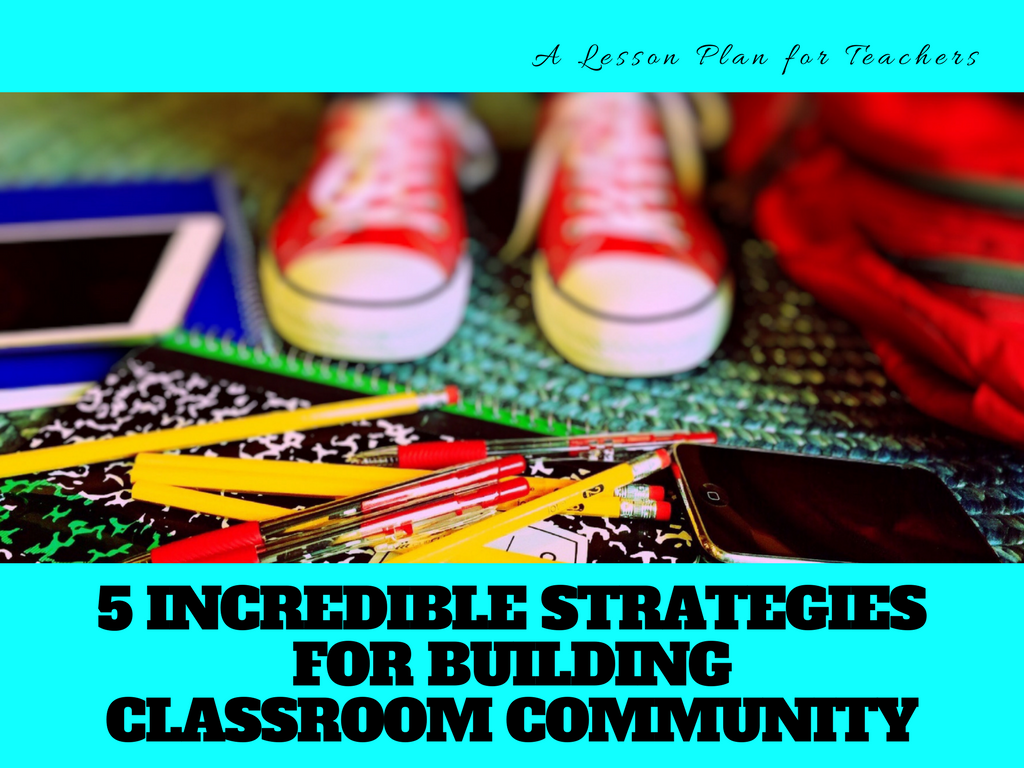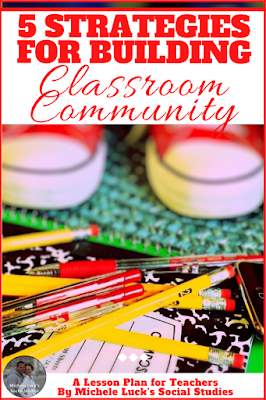Just as a sense of community is vital in the real world, developing a strong and productive sense of community in the classroom is critical. Though your students may encounter challenges throughout the year, the partnership and support of a classroom community can help resolve conflict, motivate students, and maintain your sanity as a teacher! Effective classroom management isn’t easy but it’s necessary, and integrating community building strategies into your lesson plans, back to school curriculum, and interactive classroom techniques will ensure easier classroom management, better behavior, and a more successful school year for all.

When you think about building a strong sense of community in your classroom, you may consider group work as the main, and perhaps only, method. Many teachers may shy away from collaboration in the classroom because they fear classroom chaos, discipline issues among students, and disorder in their classes. However, group work, among other classroom community building strategies, does not equate to chaos.
There are many acceptable resources online to help with building classroom community, but these 5 incredible strategies for building classroom community are sure to construct a strong foundation for the upcoming school year. Classroom community building strategies can perpetuate a strong sense of order, encouraging students to embrace learning while also utilizing the skills of their peers and classmates. Together, the class can succeed! Using these 5 incredible strategies for building classroom community, you’re sure to find success in your classroom as well.
5 Incredible Strategies for Building Classroom Community
1. Cooperative Learning Activities
As Helen Keller once said, “Alone we can do so little; together we can do so much.” Collaboration is the main component of building a strong classroom community. Utilizing group-centered activities like walking tours, response groups, and jigsaw activities allows your students to move through the curriculum in an engaging manner, alongside peers who can bolster one another, and many of these collaborative activities are ready-made and available online, making lesson planning easy and painless. Check out these gallery walks and group response activities ready for download!
2. Silent Lessons
Silent Lessons are just that – activities that are done silently and individually, but are then used group-wide. Students can compare and contrast answers, read one another’s comments and respond accordingly, and complete portions of an activity, to be later combined with the classroom whole. As they must rely on one another’s cooperation, these silent lessons strengthen your classroom community. Silent timelines are a great example of these collaborative silent lessons.
3. Current Events Discussion
Current Events are more than just a headline. To be social and culturally aware, students must engage in current events study, which will help teach inclusiveness, appreciation for diversity, and empathy for those suffering. Doing so will expand both their ability and desire to form a strong classroom community. Utilizing trusted new sources to study current events can open your students’ minds exponentially. This strategy works best when preceded by this FREE credibility and reliability experiential exercise on news sources.
4. Collaborative Game Play
Who doesn’t love games? You may be teaching middle and high school students, but they are never too old for engaging, exciting game play. Games involving trivia, quick recall, group collaboration, and a healthy dose of competition are great for building classroom community, especially if your groups must work together to earn points. You can really adapt pretty much any game to compliment your lesson plan, or you can try these established game ideas from TeachHub.
5. Set the Stage
Every successful community has community leaders who take a stand, share their knowledge, and inspire the rest of the community. Using interactive presentations, debates, and open discussion, you enable students to take responsibility for disseminating knowledge to their classmates and inspiring interaction among their peers. Setting the Stage builds student voice, confidence, and public speaking skills, all while enriching the classroom community.
These 5 strategies for building classroom community are a great foundation for growing the sense of community in your classroom. You can find further resources and strategies on the Facing History and Ourselves website; these can help to build classroom communities while also improving student empathy, cooperation, and preparing your kids to be successful adults and community members in the future. Also, check out the Classroom Organization Bundle that will make building classroom community a breeze in your back-to-school preparations! You can find more teacher tools and classroom management resources available on Michele Luck’s Social Studies.

Happy Teaching!
